Barn Quilt Trails Easy To Visit In The United States
As you drive through the scenic countryside of the United States, you might notice a colorful pattern on the side of an old barn. It’s not a remnant of a bygone era but rather a part of a barn quilt trails.
These trails have turned rural areas into open-air museums, providing travelers like you with a glimpse into the region’s cultural heritage and community spirit.
Each quilt square, usually painted squares on a wood panel, showcases a unique design that often reflects the personality of the farm or honors local traditions.
By following a barn quilt trail, you engage in a modern-day treasure hunt, where each turn can lead to a new piece of handcrafted art hidden between fields of corn and soybeans.
The idea of a barn quilt combines the comforts of age-old quilting with the rustic charm of barns scattered across America’s landscape. It began in 2001 in Adams County, Ohio, and has since woven its way through multiple states.
So next time you’re out on the road, keep an eye out and see if you can spot one of these squares; it’s a simple joy, a connection to the land and its people, that can make your journey a little more colorful.
Barn Quilt Trails
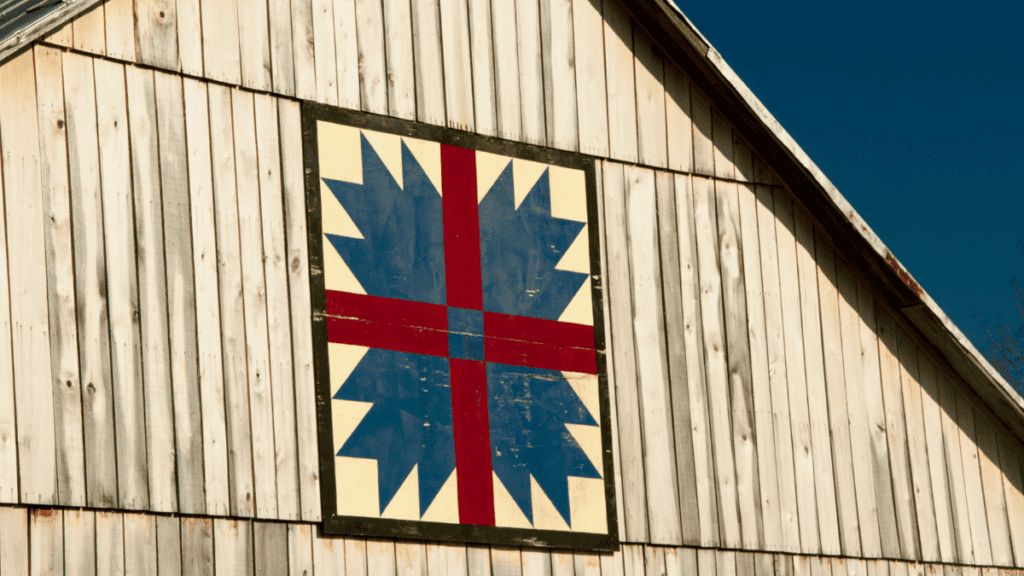
The Barn Quilt Trail has its roots in Adams County, Ohio, where in 2001, Donna Sue Groves wanted to honor her mother’s quilting art by hanging a painted quilt on their tobacco barn.
However, she thought, why stop at just one barn? So, she pitched the idea of a trail that featured quilt squares on historic barns across the county.
This would be a nod to both her mother’s talent and the community’s agricultural heritage.
Your journey through the trail is like flipping the pages of an American folk-art storybook. Each quilt square is not just a splash of color on aged wood but also a reflection of traditional quilt patterns passed down through generations.
The connection to the area’s history is palpable in the old barns adorned with these vibrant quilt patterns. Here’s how it spread:
| Year | Development |
|---|---|
| 2001 | Idea conceived by Donna Sue Groves. |
| 2003 | First barn quilt hung in Adams County. |
| 2008 | Over 1,000 barn quilts established in 27 states. |
What began as a personal tribute blossomed into a public art movement, blending the comfort of quilting with the majesty of pastoral America.
Driving along these trails, you witness painted quilt squares that whisper stories of the past while connecting threads of community.
The symbolic quilt patterns on weathered barns create a quilt trail fostering a sense of pride in rural identity.
Adams County sparked a trend that would spread to cover barns in multiple states, getting communities involved in celebrating their local histories in a unique, creative way.
Barn Quilt Patterns
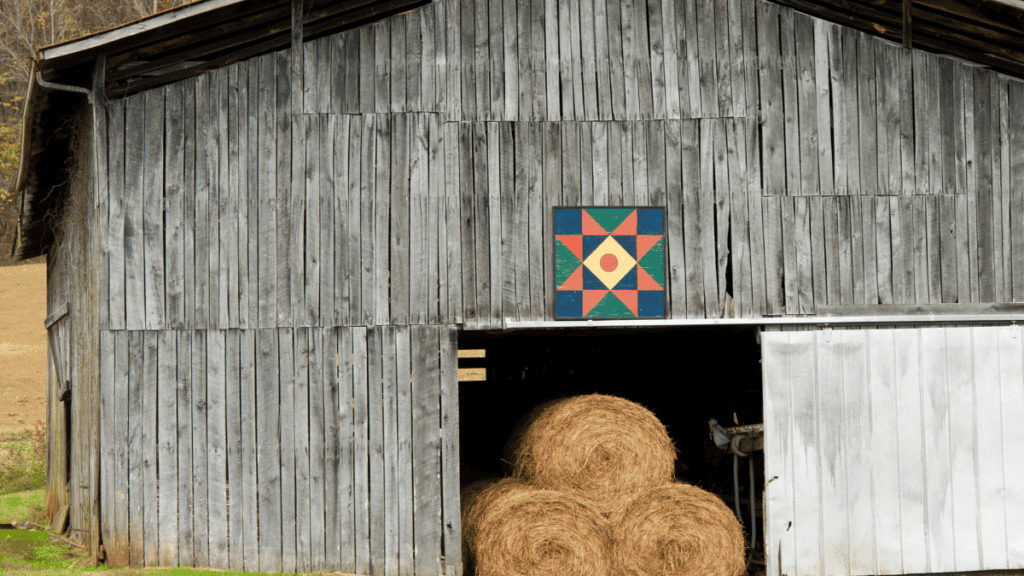
Download Free Barn Quilt Patterns
Creating barn quilts involves combining artistic skills with precise methods, resulting in vibrant, geometric designs that often reflect local culture and personal stories.
Crafting Techniques
When crafting your barn quilt, you’ll begin with a design phase. Outline your geometric pattern on a primer-sealed wooden board, ensuring your design aligns symmetrically with the grid. You’ll use painter’s tape to create sharp edges.
Be meticulous in the painting phase, often applying multiple coats for a bright, enduring finish. For a personal touch, integrate elements that resonate with your own story or local traditions.
Materials and Tools
To get started, you’ll need:
- Wooden panels (usually MDO or plywood)
- Primer and exterior-grade paint
- Painter’s tape
- A ruler or square
- Pencils and erasers
- Quality paintbrushes
Your choice of paints should have a high contrast ratio to make your colorful quilt blocks pop against the landscape. Good quality brushes and straight edges will help maintain crisp lines in your design.
Barn Quilt Trails Across America
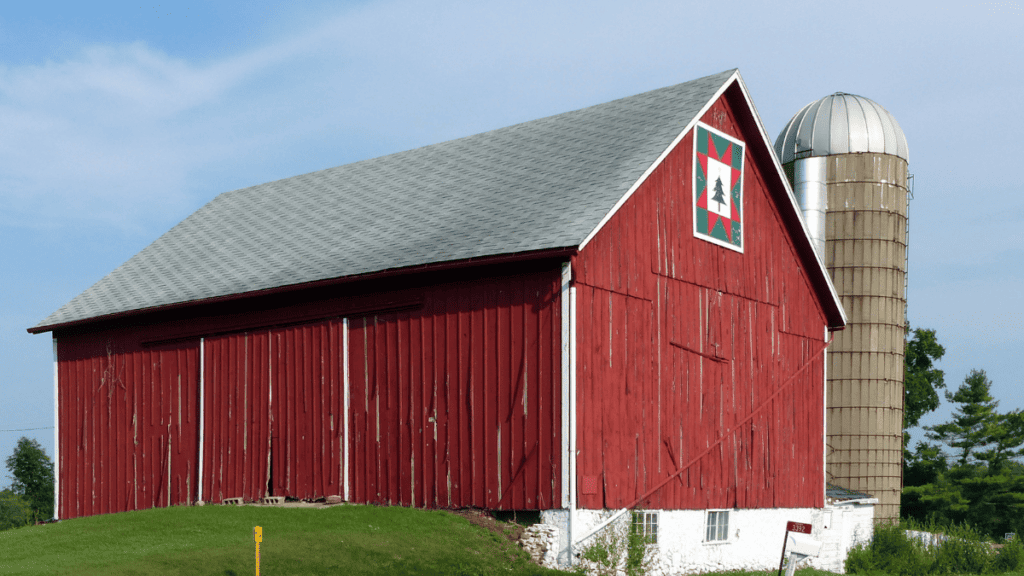
Barn Quilt Trails are a celebration of rural heritage, combining art, tradition, and community across America’s scenic landscapes celebrating barn quilt history. They create unique driving experiences and bolster local economies.
Notable Trails in the US
Barn Quilt Trails can be found nation-wide with New York, Harford County, and Marshall County leading with prominent displays. In Franklin County, you can follow a trail that showcases over 200 quilts.
Meanwhile, the Western North Carolina trail intertwines with scenic byways, inviting you to explore artist studios and area farms. Out west, El Dorado County in California is home to a picturesque trail featuring designs on historic barns.
Central Minnesota’s trail is a testament to communal efforts, linking multiple counties such as Mason County, McLean County, and Fulton County, each contributing their quilts to the display.
Venturing even further, the serenity of Plumas County and its neighboring scenic drives offers yet another space where quilt patterns and public spaces marry beautifully.
In New Hampshire, the Barn Quilt Trail combines cultural exposure with educational elements, involving local high schools in its creation of barn quilt blocks.
Community Involvement
Your local community shapes its Barn Quilt Trail. In Clay County, community projects engage locals and visitors alike with workshops and painting sessions. Public spaces become canvas for communal expression and historic preservation.
- El Dorado County: involvement through gift shop promotions supporting local artisans.
- Central Minnesota: a county-wide initiative showcasing community heritage in public spaces.
Tourism and Economic Impact
Barn Quilt Trails enhance tourism significantly and spur economic growth. Self-guided tours become part of the appeal, attracting visitors to local businesses like quaint gift shops or roadside farmer’s markets. For instance:
- Mason County: drives tourists to explore quilts and local businesses.
- Franklin County: sees a positive economic influence due to increased traffic to their trail.
Scenic byways in Western North Carolina double as routes for Barn Quilt Trails, boosting visits to artist studios and nearby farms, making these trails both a cultural journey and an economic asset for the region.
Cultural Significance and Impact
Your journey through Barn Quilt Trails offers a colorful peek into local heritage and the arts. These trails stitch together stories from the past and present, making them accessible to everyone.
Education and Preservation
You’re not just admiring beautiful quilts; you’re witnessing history and tradition. Barn owners convert their private property into open-air galleries, transforming each barn into a chapter of a larger story.
By doing so, they share with you not only their personal history but also elements of cultural importance, like signals used in the Underground Railroad. Here’s how it breaks down:
- Privacy Policy Considerations: Barn Quilt Trails balance the privacy of barn owners with public interest. Visitors must respect that these artworks are on private property, even as they enjoy the public display.
- Cultural Continuity: Owners curate their own quilt trails, fostering a connection with the past. By maintaining these trails, they help preserve local lore and traditions.
Public Art and Accessibility
Barn Quilts are unique in that they bring the gallery to you, on rural backroads, rather than inside city museums. Here’s what you get from this:
- Art for All: The trails ensure public access to art, inviting you to experience beautiful quilts without entry fees or barriers.
- A Drive-By Art Show: A leisurely drive along these trails puts you face-to-face with vibrant patterns and designs that have stood the test of time.
When you tour a Barn Quilt Trail, you’re not just taking a scenic drive, you’re engaging with a living exhibition that educates and preserves culture while ensuring art remains within everyone’s reach.
Fabric Giveaway
Enter our monthly fabric giveaway. Simply complete the tasks daily and you will be entered into the drawing. Winner will be randomly drawn on the first day of the month and notified via email


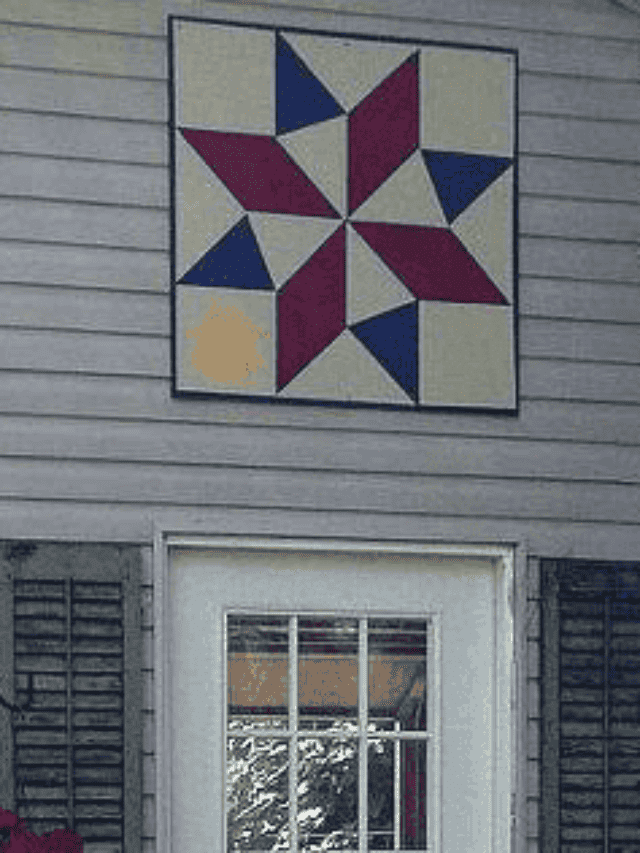
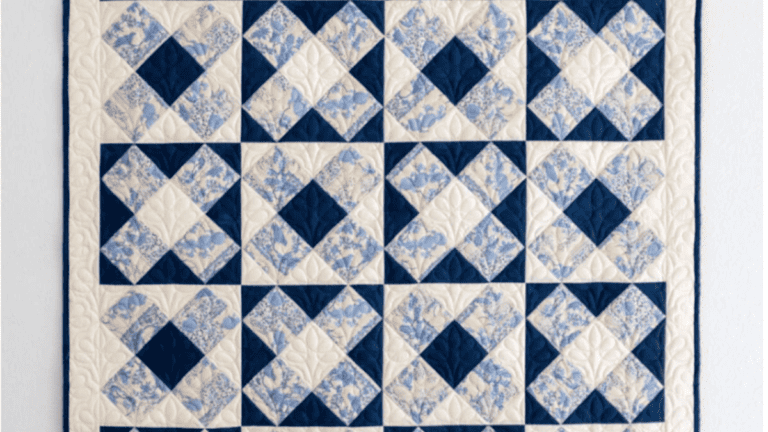
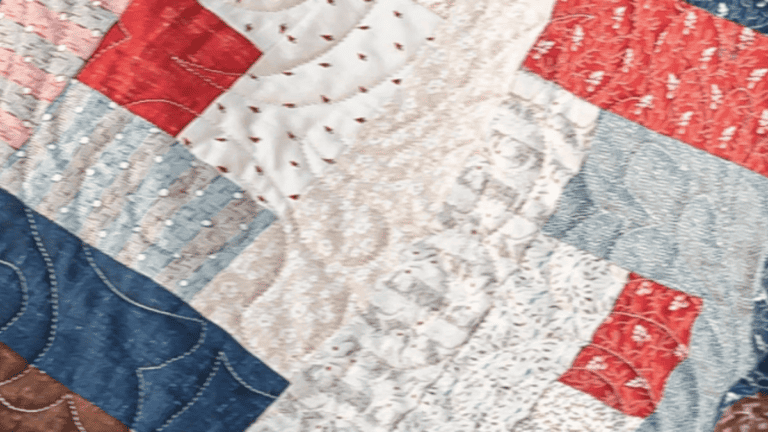
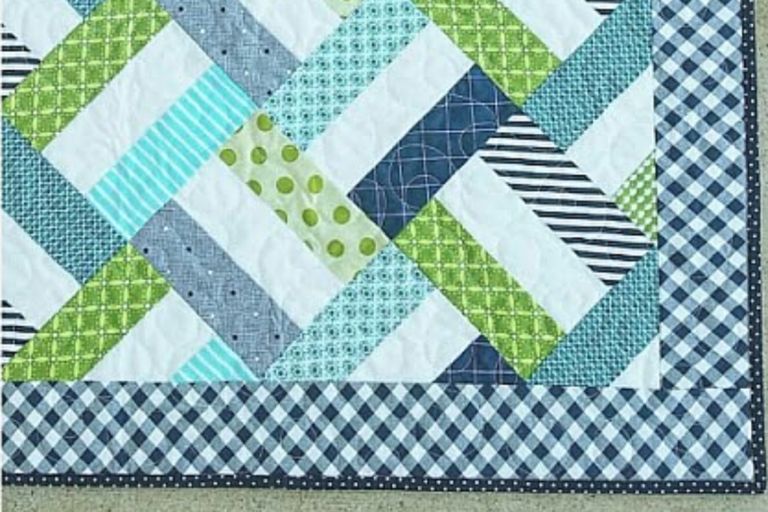
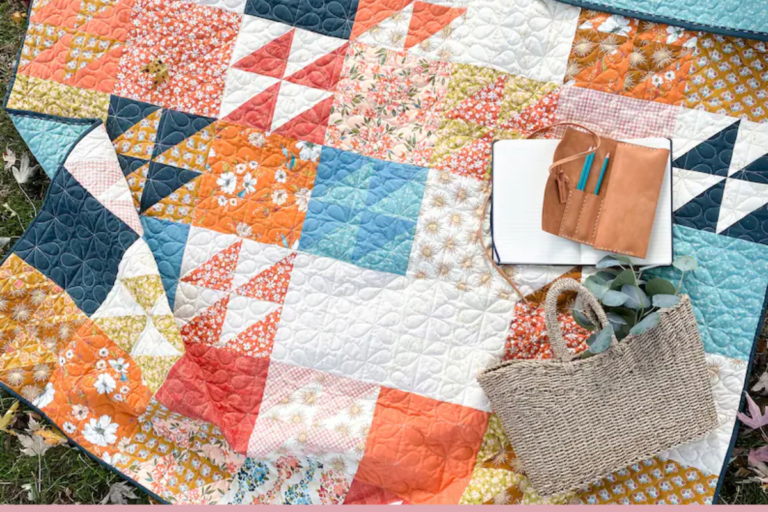
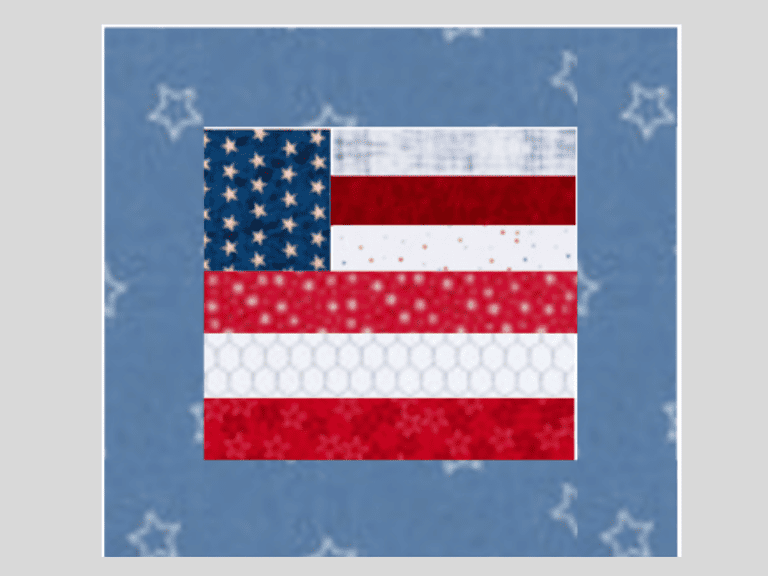
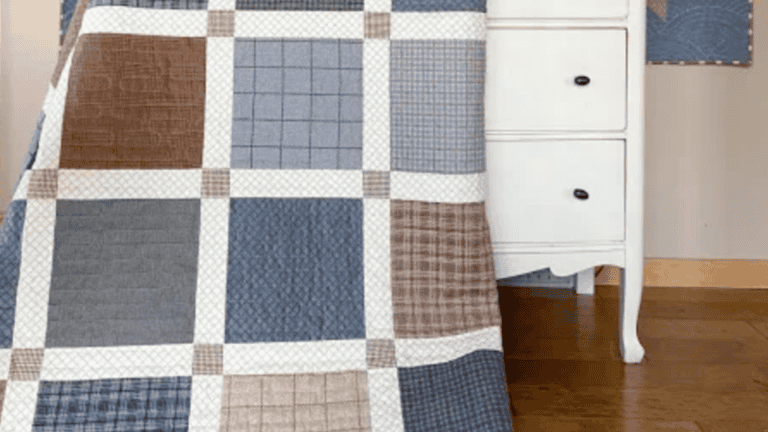
3 Comments